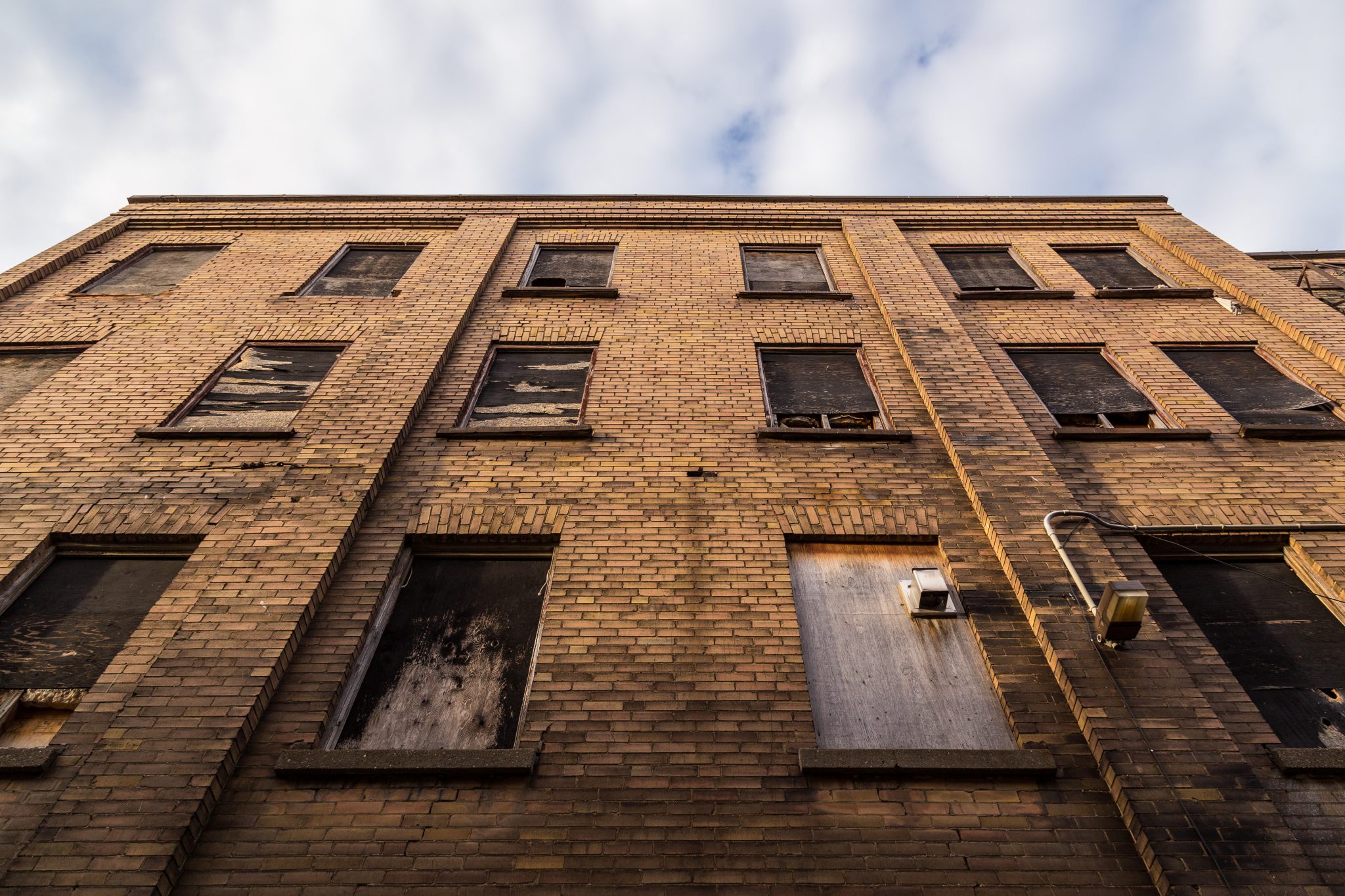I found the asphalt buckled up, forced open by a cluster of mushrooms determined to grow skyward. How does this happen? How far does the rootlike network of mycelium go, that thick matted mass beneath the pavement? Does it connect with its kinsfolk, build bridges, sneak around among the sewer pipes and gas lines? In a dank corner of Hall’s Lane, our thin layer of civilization yields to the mushroom’s self-assurance.
A week later, someone had poured hot asphalt over the area, and the mushroom caps were gone. Only a small bulge of tar hinted that anything had been disturbed.
If King Street is a stage, walking along Hall’s Lane is like slipping behind the curtain, among the rigging and the catwalk. When I step under that rusted-out fire escape with the Home Depot bucket hanging off one railing, I find comfort in familiarity. Living in Kitchener, I feel that I belong here – and that Hall’s Lane belongs to me, too.
Maybe it’s the way the walls hold me tight. Or how the backs of buildings never get polished like their front entrances do. Layers of construction from different eras, like the stratified geology on the side of a cliff. Bricked-up windows showing evidence of growth and decline over decades.
I remember when they gutted the Walper for renovations. Greyish bricks piled like dirty laundry in the laneway behind the hotel. We’ll deal with it eventually. I glanced over my shoulder, then pocketed a brick as a souvenir. If my neighbourhood was changing, I might as well take something to remember it by.
My jacket pocket strained from the awkward weight, so I just held the brick at my side. There’s a stereotype that downtown Kitchener is sketchy, and I disagree, but there I was walking around with a heavy chunk of construction scrap. I wanted to return to the anonymity of Hall’s Lane, where there’s no fear of being watched.
One summer, they decided the lane needed to be tamed. A brash announcement: the gentrifiers are here! Make them comfortable! They set up in our no-man’s-land and “activated” the space. Craft beer, a climbing wall, loudspeakers. They brought the ruckus and had the gall to call it order.
A friend of mine was taking the lane uptown when he was flung head-over-handlebars onto the ground. A passerby stopped, looked, and kept going. My friend took his smashed bike and fractured collarbone to the hospital, alone. On Hall’s Lane, we don’t stop to greet our neighbours. We scuttle around them. We tend to avoid one another, if we can help it. Hall’s Lane is a great anti-social urban space.
The first time you and I got together at the Night\Shift festival, I was intoxicated by your sly confidence. I had recently returned to town and was making different friends, a newborn social animal. You pulled me aside into Hall’s Lane and slipped a bottle of Alpenbitter from inside your jacket. We tipped back the sugary elixir, and felt the heartbeat of the city ringing in our ears.
En route from the pre-drink to the party, Hall’s Lane provided the right kind of cover for our in-between indulgence. An exhaust vent spewed sweet fog, snaking around our shoulders and bathing the city in a soft focus.
Hall’s Lane is a place where I can feel anonymous, where I can let my shoulders sag and drag my feet. Elsewhere in this tight-knit city, I need to be ready to bump into a friend, run into an old boss, or meet a neighbour. Kitchener is losing its hidden in-between spaces. In the face of the new and improved, the shiny and spectacular, the laneway is a gift because it doesn’t demand anything from me.
Sam Nabi is also the website consultant for WLUSP, TCE’s parent organization.




Leave a Reply